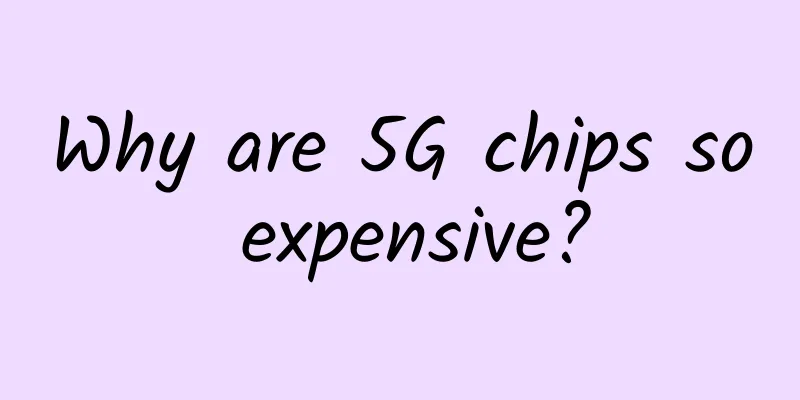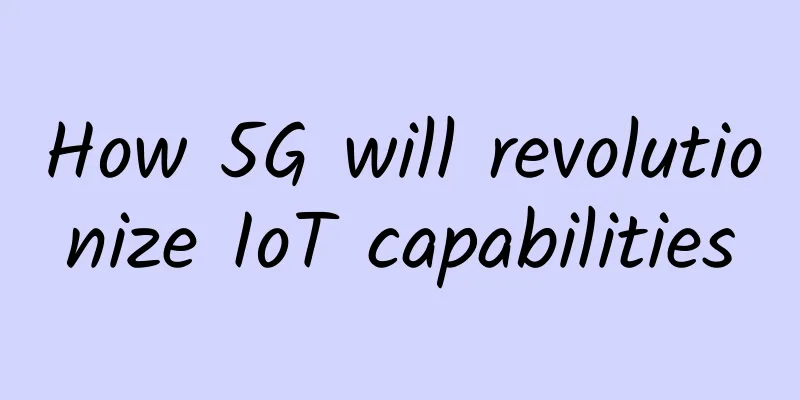6G is not just a gimmick, 5G still has problems

|
Faced with the huge demand of nearly 800 million mobile phone users, believe it or not, 5G is coming at full speed. There are reports that my country is expected to issue 5G licenses by the end of this year, and the 5G mobile phones that everyone is looking forward to may start to appear in the first half of next year. So will the arrival of 5G be so smooth? In addition, is the 6G concept proposed by foreign experts at the beginning of the year just a gimmick? 6G is not a gimmick, and 5G still faces challenges, which can be understood from the following seven points.
6G launches multi-party exploration Let's first look at the news about 6G. In addition to the fact that Charter, a US cable TV service provider, has announced to the outside world that it has started 6G research at the beginning of the year, all countries have actively invested in the development of new 6G technologies, such as new media, methods, architectures, spectrum and other fields. Some people even see the future of 6G as a combination of blockchain and dynamic spectrum sharing technology, and believe that as the network becomes more dense, blockchain-based dynamic spectrum sharing technology will become a major trend of 6G. 6G has become a hot topic Not only have technical personnel spoken out, but at the MWCA 2018 in September, FCC officials in the United States also publicly envisioned 6G technology. And a few months ago, "6G" became a hot search term on Google, and was rated as the 17th most popular word in the search engine. Recently, a Fortune 500 company also detailed its new research on 6G services. Next-generation technology must be prepared However, is it too early to start 6G research? An expert from the Institute of Technology and Standards of the China Academy of Information and Communications Technology once told the outside world, "Scientific research should generally be ahead of market applications. There is a saying that goes 'use one generation, research one generation, and reserve one generation'. To put it bluntly, we should eat what is in the bowl, stare at what is in the pot, and think about what is in the field. Most areas are now using 4G technology, and 5G will soon be put on the market. It is normal to start research and development of the next generation of communication technology at this time." Therefore, the Minister of my country's Ministry of Industry and Information Technology also announced that my country has begun to study 6G. 5G lays the foundation for 6G evolution It should be said that with the introduction of artificial intelligence and blockchain technology, 5G continues to verify and accumulate in the aspects of massive MIMO, 5G NR new frequency band, backhaul, network slicing, cloudification and edge computing, all of which provide technical accumulation for the research and development of 6G. Although user needs may change dramatically in the next 10-15 years, the enthusiasm for exploring 6G can no longer be stopped. So what about the 5G that is about to be launched? Has it entered a stage of smooth sailing? Demand difficulties need to be overcome The answer to the above question is of course no. Although the time for 5G commercialization is gradually getting closer, there are still many challenges facing 5G. For example, new applications such as driverless cars, the Internet of Things, and virtual reality that are promoted for 5G all require 5G to provide exponential improvements in bandwidth and latency to meet the needs of high-speed interconnection. Simulation testing troubles 5G When it comes to technical details, 5G's channel simulation, millimeter wave utilization, beamforming effects, etc. all need to undergo rigorous deployment, testing, and acceptance before they can reach commercial levels, and then be pushed to the majority of users to experience high-speed transmission and millisecond-level delays. 5G channel emulation is a challenge because the number of required RF channels will grow exponentially, as opposed to the linear scaling of 3G and 4G versions. To make 5G test equipment feasible, electronic technology must advance rapidly to compensate for the complexity. Innovative solutions should continue to be explored to minimize chamber testing and other expensive test elements without compromising test coverage and accuracy. Obstacles to UHF 5G Applications Additionally, utilizing mmWave and beamforming at ultra-high frequencies presents additional hurdles. Because these frequencies are more susceptible to propagation losses in environmental conditions, over-the-air (OTA) testing can be less consistent and more complex. However, because conducted mode testing is not possible without discrete connection points, OTA needs to be used more frequently. Without 5G delivery, it will be nothing but empty talk In addition to rigorous testing solutions, the final delivery of 5G is also critical. Previous forecasts show that by 2035, the global economic output driven by 5G technology will reach 12.3 trillion US dollars. Whether 5G can be successfully delivered to customers will naturally affect the changes in the overall market size. For example, communication service providers need to determine whether to apply 5G to a field based on their understanding of the industry and its needs. For industry users, 5G can not only deliver continuously but also bring new market opportunities. In addition, for consumers, whether they are willing to pay more for 5G probably depends on the 5G experience they get. Of course, there are also considerations from the communication security level. The new technology and architecture of 5G have virtually expanded the network attack surface. For many companies today, it is still unknown whether the limited budget can cope with the subsequent changes in defense. Conclusion At present, all walks of life are facing cruel transformation, tremendous pressure and unimaginable complexity. The advent of a new generation of mobile communication technology has brought not only opportunities but also challenges. When 5G and 6G technologies become hot words, testing guarantees must obviously keep up, and the user experience delivered to consumers will obviously become another hurdle to test the wisdom of operators. |
<<: Tian Suning's predictions for the 5G era: more scenarios, more ecosystems, and more risks
>>: Have you ever thought about why TCP needs to handshake before sending data?
Recommend
Ministry of Industry and Information Technology: Canceling the location of mobile phone numbers will increase the risk of telecommunications fraud
[[349030]] Can the location of mobile phone numbe...
The report said that the number of Internet users in my country has reached 940 million and the Internet penetration rate is 67%.
The China Internet Network Information Center (CN...
zorocloud: US CN2 GIA line VPS monthly payment starts from 34 yuan, including DDoS protection
Zorocloud is a domestic hosting company that was ...
Eight data center technologies verified in 2015
2015 was a year in which new technologies matured...
Do you understand the principle of Ethernet data transmission?
[[276059]] Routing is done based on the destinati...
How to implement the national wireless standard through testing? NETSCOUT explained the implementation case in detail at the "Wireless LAN Test Specification" publicity meeting
[51CTO.com original article] On November 22, the ...
CheapWindowsVPS 50% off, 1Gbps unlimited traffic starting from $4.5 per month, 7 data centers to choose from
CheapWindowsVPS is an established foreign hosting...
3 Ways 5G is Driving Edge Intelligence
5G is closely tied to edge computing. With a whol...
VMISS VPS 30% off monthly payment starting from 18 yuan, Hong Kong CN2/Korea CN2/US CN2/Japan optional
VMISS currently offers a 30% discount coupon for ...
Huawei awards the father of Polar code to pay tribute to basic research and exploration spirit
[Shenzhen, China, July 26, 2018] Today, Huawei he...
Myanmar, indefinite Internet disconnection!
In Myanmar, one crisis follows another. Myanmar h...
2019 Global Trend Conference 5G Ecosystem Cooperation Forum 5G era brings infinite imagination to the future
From November 28th to 29th, the "2019 Global...
Qorvo Announces Increased RF Fusion20TM Module Availability
[[390846]] Qorvo, a supplier of RF solutions for ...
5G will play a key role in driving semiconductor market growth
According to foreign media reports, the much-anti...
NetCloud: San Jose CN2 GIA line VPS monthly payment starts from 29 yuan, with 15 extra days for the first month
Wangyun (wangyun.net) is a Chinese hosting provid...









